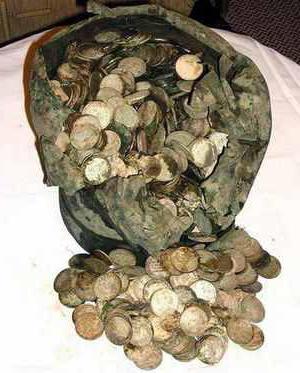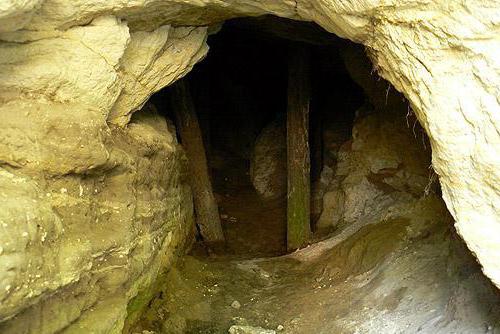Quite a popular character in the history of Slavic folklore was the chieftain Kudeyar. Legends about him are known in many areas of both central and southern Russia. This article will examine in more detail some fairly well-known references in the history, legends and literature of this chieftain.
The origin of the name Kudeyar
No one can name the exact dates of the life of ataman Kudeyar, but it is generally accepted that he lived in the sixteenth century. There are many opinions regarding the origin of the Persian name Khudoyar, which means “beloved of God,” or Kudeyar, most often it is given Tatar origin. In western and central Russia, this name had a different meaning - the most powerful wizard.
For a long time, Kudeyar's own name was found in many provinces, such as Voronezh, Kharkov, Tula, Kaluga and many others. Later, the surname Kudeyarov began to gain popularity.
The name of the chieftain Kudeyar is found not only in legends. Examples of mentioning it in history can be given:
- In the noble family of Markovs, a native of Kursk, was Kildeyar Ivanovich, who was abbreviated as Kudeyar.
- Some historical documents mention a landowner originally from Arzamas, who was named Kudeyar Chufarov.
- The name of the Moscow Cossack Karachayev Kudeyar is known.
- Often in the annals, Prince Meshchersky Kudeyar Ivanovich is mentioned.
- There are records of a traitor to the motherland who fled to the Crimea, named Kudeyar Tishenkov, originally from the Belevsky boyars. Many associate this particular historical figure with the image of the chieftain.
Identification of the chieftain with Tsarevich Yuri
There are several legends in which a parallel is drawn between the ataman Kudeyar and Yuri Vasilyevich, the son of Solomoniy Saburova and Vasily III. You can highlight some of them:
- The legend comes from Saratov, which tells that Ivan the Terrible left Moscow for Kudeyaru's trustees before setting off for military operations in Kazan. Later it was found out that the Kazan decree was false, made so that during the absence of the sovereign Kudeyar Vasilyevich, having appropriated the state treasury, would disappear from punishment.
- The Simbirsk legend says that Yuri Kudeyar was called to Kazan for execution at the hands of Grozny. However, having learned in advance about the tsar’s intentions, Yuri took up defensive positions on the Volga, near Krotkovsky city.
- A legend is known that Tsar Ivan the Terrible nevertheless met with Yuri at besieged Kazan, and he, in turn, fled from the ruler to the north of the country.
- Kursk legend says that Yuri was captured by Tatars who wanted to get a ransom from him for the sovereign. When the attempt failed, the captive was sent along with the army to the war for the royal throne. However, this idea was unsuccessful, after which Yuri remained on Russian lands, where he engaged in robbery.
- The Suzdal legend, on the contrary, tells of the conclusion by Kudeyar Vasilyevich of a voluntary alliance with the Tatars, whose goal was to conquer the throne. However, having seen from the outrage committed by the Tatars, he defended his native land.
All the traditions of both the ataman and Yuri Kudeyar indicate his betrayal of the motherland, which manifests itself in escape or in switching to the side of the enemy.
Other legends of the origin of Kudeyar
There are many stories about the origin of the chieftain Kudeyar:
- According to the Voronezh chronicles, Kudeyar was a tax collector at the khan. Once, having plundered Russian settlements, he decided not to return to the ruler, settled in the Voronezh lands, gathered like-minded people around him and continued his robber life. Soon he fell in love with a Slavic girl, abducted her and made her his wife.

- In the village of Lokh, they believe in the legend that Kudeyar was none other than the younger brother of Grozny. The sovereign decided to kill him, believing the rumors that when he grows up, he will deprive him of his rightful throne. However, the servants disobeyed the orders of the king and fled with the prince, who later converted to Islam and was named Kudeyar.
- There is a legend that Kudeyar was the son of Zhigmont Botorius, who was born even before the proclamation of his uncle as king of Poland. He fled to the Dnieper to the Cossacks, later joined the service of Ivan the Terrible, but after the tsar’s disgrace he fled and went into a robber life.
- In Ryazan, it is believed that Kudeyar was an oprichnik who not only robbed merchants from Moscow, but also appropriated the livestock of local residents.
- In the Oryol province, the chieftain was positioned as an unclean spirit that guards its treasures.
Given the huge number of sources that are different from each other, it is difficult to give an accurate description of the chieftain Kudeyar.
Legends of the Cudeira Cave
For a long time, many treasure seekers tried to find the treasures of the robber Kudeyar, about which there are many legends. But everything was inconclusive. Many ancient manuscripts tell of cities where the robbers of the chieftain Kudeyar hid the loot. Most of these places are noted in the Voronezh region. According to some stories, in the forests of Bryansk there are places where treasures are hidden, and at night light is visible from under the rubble of stones, and sometimes a child cries.

Kudeyarova cave is described as a place in which not only the loot was stored, but the ataman himself lived in richly furnished chambers. The mountain in which the cave was located is completely covered with dense thickets. Next to it is another mountain - Karaulnaya, on which the robber sentries were placed. Around these places a deep moat was dug, protecting the shelter and its inhabitants from uninvited guests. At the time when Kudeyar left his shelter in search of new profit, he locked all the rooms, and he blocked the entrance to the cave with stones. It is believed that the spirit of the chieftain to this day guards his countless wealth from people. Some are of the opinion that Kudeyar, by virtue of his magical abilities, is still alive today.

There is another version of the legend. According to her, all his treasures were bewitched from human eyes for 200 years. This deadline is long gone, and an odd number of people are needed to search for a treasure. After the entrance is dug, to open the lock you should use the golden key, which is stored in the Sim spring. It is not so easy to get it, only one who scoops up the source or can get water from the Supper Lake, whose location is not known to anyone, can do it.
Collective image of a robber
The image of Tsarevich Yuri, whom many consider the robber Kudeyar, is collective in history and consists of biographical data of real, but completely different people. As a result, the name Kudeyar among the people has become a household name. It characterizes all existing robbers. It is not possible to name this character reliably historical, due to the lack of data confirming his real existence.
According to the records made in the Saratov province, Kudeyar appears as a Tatar who knows Russian well and is distinguished by a rather high growth and bestial appearance. Also, many legends endow this character with magical abilities that helped him in robberies, and also hid him from his pursuers.
In some manuscripts, the ataman is described as a black-haired man of a quick-tempered and indomitable disposition, who at the same time was also a masterful Cossack. In turn, according to some folk tales, a different image appears - a man of attractive appearance, a heroic character, not stupid, who has a weakness for young girls.
In general, several images of Kudeyar based on ancient legends can be distinguished. Some attribute to him the life of a cruel robber, others believe that the chieftain Kudeyar was royal blood and was hiding from the righteous anger of the king. There is also an opinion that he was an impostor who impersonated a man as a royal blood.
Mention of a character in the work of Nekrasov
Ataman Kudeyar by Nikolai Alekseevich Nekrasov, the great Russian writer, is mentioned in “Who can live well in Russia,” in one of the chapters entitled “Feast to the World.” The last lines of this chapter differ depending on the edition, as several text variations are known:
- A manuscript of 1876 for the journal "Domestic Notes" and a censorship typographic print based on this manuscript. Another truncated publication in this journal was noted in 1881.
- In 1879, an illegal publication of the St. Petersburg Free Printing House was issued. This option is included in the collected works of the author.
In this work, the character Ataman Kudeyar is a legend told by Ionushka. His story tells of a fierce robber who repented of his sins and began a hermit life. However, he does not find a place for himself, and one day a wanderer appears to him, who tells how a robber can achieve peace. To do this, cut the centuries-old oak with the very weapons that killed innocent people. It took years to complete this task, but the tree collapsed only after the murder of Mr. Glukhovsky.
Ataman Kudeyar’s close people didn’t have a lot of people in “To live well in Russia”. The work indicates their number. This is stated in the poem: "Twelve robbers lived, the Kudeyar Ataman lived." When Kudeyar decided to atone for his sins and repent, he dismissed his retinue into free bread.
Mention in the works of other authors
The image of the ataman Kudeyar is present not only in the work of Nekrasov. Mention of him is in Kostomarov’s novel Kudeyar, as well as in Kudeyar’s Last Love, described by Navrotsky.
Kostomarov in the work has references to the legend of the origin of the character from the first marriage of Vasily the Third. His wife after the divorce was sent to the monastery because of infertility. However, within the walls of the monastery, a son is born to her. A woman sends him with loyal people to the Turkish border, where the prince is captured. A little later, becoming more adult, he makes an escape to his native land, where he becomes a robber named Kudeyar.
This character is also mentioned in Soviet literature:
- In Kuprin’s story “Grunya” there is a comparison of the uncle of the main character with the image of the famous chieftain.
- The story of Kudeyar was described by Bahrevsky in the work "Ataman Treasure".
- Shiryaev mentions the chieftain in Kudeyarovy Oak.
- Alexandrov describes the image in Kudeyarovy camp.
- The robber is mentioned in the cycle "Pelageya" by the writer Akunin.
Chaliapin's song
“Twelve robbers lived, Kudeyar-ataman lived” - this is how the first couplet of the song “The Legend of the Twelve Robbers” performed by Fyodor Ivanovich Chaliapin begins according to the work of Nekrasov. According to some sources, the creation of music is attributed to Nikolai Manykin-Nevstroyev.
Kudeyar Ataman, a song about a robber and his comrades-in-arms, is performed in conjunction with a choir that sings the chorus after each verse: “Let us pray to God, we will announce the ancient past! So the monk told us honest Solovki Pitirim.”
This creation, although based on the text from the unfinished poem by Nekrasov, "Who can live well in Russia," but, in turn, has significant semantic differences. For example, the poet’s work did not indicate that Kudeyar and Pitirim are one and the same person, unlike a song.
In addition, in many legends and in the text of the work, Kudeyar is described as a kind of avenger from the people who ends the life of a robber, becomes a pilgrim and lives in solitude in the wilderness, and Kudeyar-ataman in a song goes to the monastery to atone for his sins.
The lyrics have several options and artists. Many have heard this work performed by Yevgeny Dyatlov. Today it is included in the repertoire of many male church choirs.
Kudeyarovo settlement
According to some legends, the chieftain Kudeyar lived with his robbers on the shore of the Seim in the so-called Kudeyarov settlement. This legend mentions Catherine the Second, who at that time was making a trip through the south of Russia. In one of her huts near this fortress, Kudeyar stole the Empress’s golden carriage and buried it between three oaks.
No less famous is the Devil's Settlement, which many call the Jester Mountain, on the road from Kozelsk to Likhvin. This place was very well located, because it was on this road that caravans of goods that were excellent prey for any robber quite often passed.
Many believe that Kudeyar’s shelter, built for him by unclean forces, was located here. It is believed that it is precisely this force that safeguards the hidden treasures of the robber to this day, and at night in those places the ghost of Lyubusha, the daughter of the chieftain, who was cursed and imprisoned by her own father in these lands, appears.
Black Yar
In fact, a large number of Kudeyar cities are known in southern Russia. Each province has its own stories and places where the treasures of the Kudeyar gang are hidden.
Very popular is the mountain Cherny Yar, which is located in the Lipetsk region. Its distinguishing feature is a bluish-colored stone lying on top, which is considered to be the petrified horse of the chieftain, who received such a color after being scorched by fire.
According to many legends, it was here that the Kudeyarov fortress was located. According to legend, the Don Cossacks, dissatisfied with the atrocities of Kudeyar and his robbers, took up arms against them. When they got to the fortress, they couldn’t capture it, so they laid it around with brushwood and set it on fire.
Ataman hid all the loot and left his beloved horse as a guard. And so she did not suffer from the fire, he turned her into stone.
For most contemporaries, the chieftain Kudeyar is a forgotten story, but not so long ago this character was legendary, one might say semi-mythical. And even today, the memory of him is preserved in the names of mountains, cities, spring, and the name Kudeyar itself is associated with an ominous, remarkable force.